Intro
Discover 5 ways leg vein thrombosis occurs, including blood clots, deep vein thrombosis, and pulmonary embolism, to understand the causes and risks of venous thromboembolism, phlebitis, and vascular diseases.
Leg vein thrombosis, also known as deep vein thrombosis (DVT), is a serious medical condition that occurs when a blood clot forms in the deep veins of the legs. This condition can be life-threatening if the clot breaks loose and travels to the lungs, causing a pulmonary embolism. It is essential to understand the causes and risk factors of leg vein thrombosis to prevent and treat this condition effectively. In this article, we will delve into the five ways leg vein thrombosis occurs, its symptoms, diagnosis, treatment options, and prevention strategies.
The importance of understanding leg vein thrombosis cannot be overstated. According to the Centers for Disease Control and Prevention (CDC), DVT affects approximately 900,000 people in the United States each year, resulting in 60,000 to 100,000 deaths. The condition can affect anyone, regardless of age or health status, although certain factors increase the risk of developing DVT. By recognizing the causes and symptoms of leg vein thrombosis, individuals can seek medical attention promptly, reducing the risk of complications and improving treatment outcomes.
Leg vein thrombosis is a complex condition that involves multiple factors, including blood flow, blood composition, and vein damage. The deep veins of the legs are prone to clotting due to their location and function. When a clot forms in these veins, it can cause swelling, pain, and discoloration of the affected leg. In severe cases, the clot can break loose and travel to the lungs, causing a life-threatening pulmonary embolism. Understanding the five ways leg vein thrombosis occurs is crucial for developing effective prevention and treatment strategies.
Introduction to Leg Vein Thrombosis
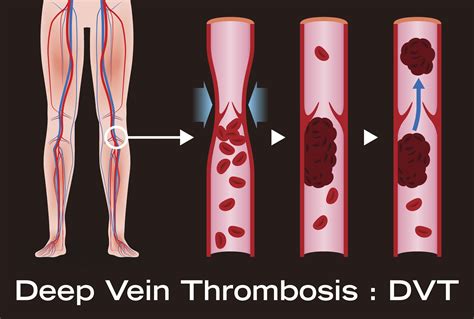
Cause of Leg Vein Thrombosis
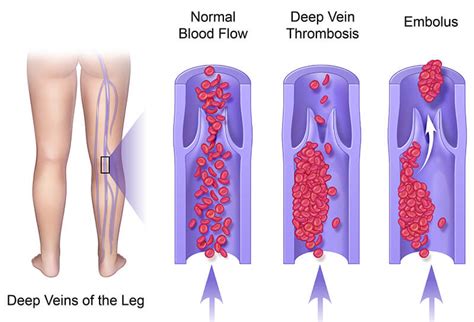
Immobility and Leg Vein Thrombosis
Immobility is a significant risk factor for leg vein thrombosis. Prolonged bed rest, long-distance travel, or any situation that restricts movement can increase the risk of DVT. When the legs are immobile, blood flow is reduced, and the risk of clotting increases. This is why it is essential to move regularly, especially during long trips or periods of bed rest. Simple exercises, such as ankle circles and leg lifts, can help improve blood flow and reduce the risk of DVT.Blood Composition and Leg Vein Thrombosis
Blood composition plays a crucial role in the development of leg vein thrombosis. High levels of clotting factors, such as factor VIII, can increase the risk of DVT. Certain medical conditions, such as cancer, can also affect blood composition and increase the risk of clotting. Additionally, some medications, such as birth control pills, can increase the risk of DVT by affecting blood composition.Symptoms of Leg Vein Thrombosis
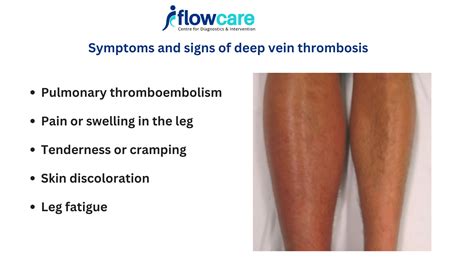
Diagnosis of Leg Vein Thrombosis
The diagnosis of leg vein thrombosis typically involves a combination of physical examination, medical history, and imaging tests. The doctor will perform a physical examination to check for swelling, pain, and discoloration of the affected leg. The doctor will also ask about medical history, including any previous episodes of DVT or pulmonary embolism. Imaging tests, such as ultrasound or CT scan, may be used to confirm the diagnosis.Treatment of Leg Vein Thrombosis
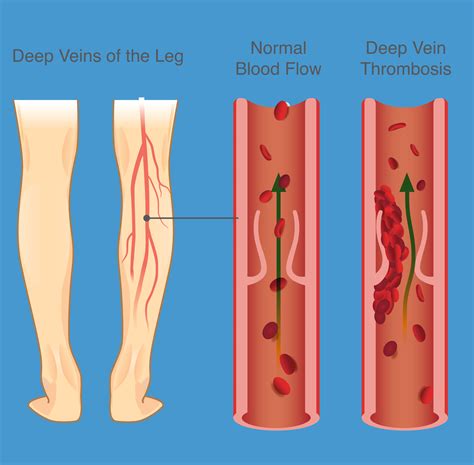
Prevention of Leg Vein Thrombosis
Prevention is key to reducing the risk of leg vein thrombosis. Simple measures, such as regular exercise, maintaining a healthy weight, and avoiding prolonged immobility, can help reduce the risk of DVT. Additionally, individuals with a history of DVT or pulmonary embolism should take anticoagulants as directed by their doctor. Compression stockings and elevation of the affected leg can also help reduce the risk of DVT.Complications of Leg Vein Thrombosis
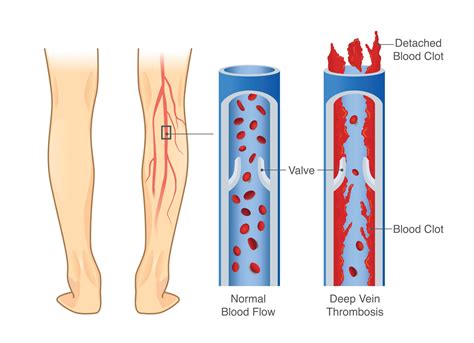
Post-Thrombotic Syndrome
Post-thrombotic syndrome is a common complication of leg vein thrombosis. It can cause chronic pain, swelling, and discoloration of the affected leg. The condition can be debilitating and affect quality of life. Treatment options for post-thrombotic syndrome include compression stockings, elevation of the affected leg, and pain management.Conclusion and Final Thoughts

We invite you to share your thoughts and experiences with leg vein thrombosis in the comments section below. If you have any questions or concerns, please do not hesitate to ask. Additionally, we encourage you to share this article with anyone who may be at risk of developing DVT.
What are the symptoms of leg vein thrombosis?
+The symptoms of leg vein thrombosis include swelling, pain, and discoloration of the affected leg. In some cases, the clot can break loose and travel to the lungs, causing a pulmonary embolism. Symptoms of a pulmonary embolism include chest pain, shortness of breath, and coughing up blood.
How is leg vein thrombosis diagnosed?
+The diagnosis of leg vein thrombosis typically involves a combination of physical examination, medical history, and imaging tests. The doctor will perform a physical examination to check for swelling, pain, and discoloration of the affected leg. The doctor will also ask about medical history, including any previous episodes of DVT or pulmonary embolism. Imaging tests, such as ultrasound or CT scan, may be used to confirm the diagnosis.
What are the treatment options for leg vein thrombosis?
+The treatment of leg vein thrombosis typically involves anticoagulation therapy to prevent the clot from growing and breaking loose. Anticoagulants, such as heparin or warfarin, can help reduce the risk of pulmonary embolism. In some cases, thrombolytic therapy may be used to dissolve the clot. Compression stockings and elevation of the affected leg can also help reduce swelling and improve blood flow.
